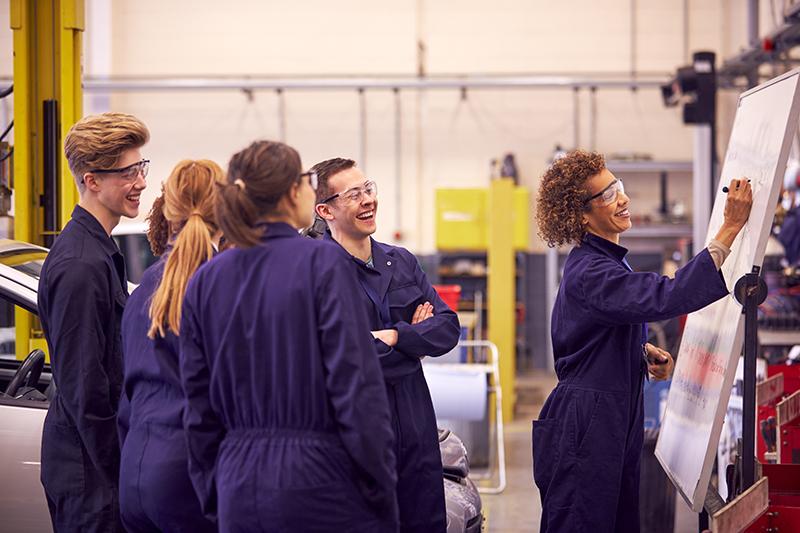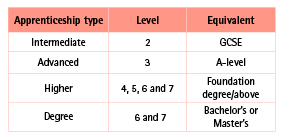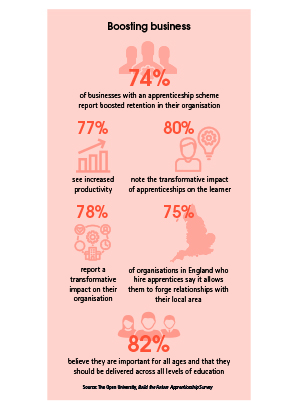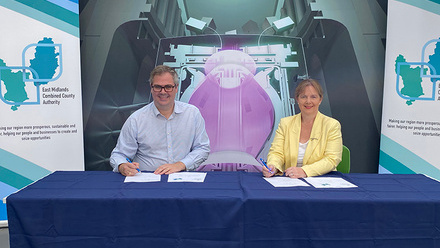A guide to apprenticeships for prospective students
Apprenticeships allow students to get their foot in their chosen industry door and for businesses to find and raise talent in-house. Materials World put questions to the Institute for Apprenticeships and Technical Education, UK, to find out how prospective students can access the most relevant apprenticeship for them and find advice for companies looking to create such a scheme.

For potential students
Who would you recommend apprenticeships to?
Apprenticeships are a great way of launching into successful careers. Apprentices learn the knowledge, skills, and behaviours that employers need, gain valuable work experience, and are also paid a wage. Apprenticeships are therefore great for young people looking to learn new skills and build up work experience. They can also work well for people who want to retrain later on in life.
What apprenticeship levels are available?
There are over 630 apprenticeships currently available. They range from entry level 2 and 3, which is equivalent to GCSE and A-Level, up to levels 6 and 7, which is degree level. You can look through them all on our website.
As of September 2020, there are also now T Levels. T Levels are new two-year courses that will follow GCSEs and will be equivalent to three A Levels. They have been developed in collaboration with employers and businesses so that the content meets the needs of industry and prepares students for work.
All apprenticeships and T-Levels are based on occupations recognised by employers. The 'occupational maps' featured on the website bring these together to show where technical education can lead. A Standard, explaining what someone in the occupation does and designed by groups of employers, has been written, or is in development, for most of these occupations, although some await interest from employers.
The maps feature groups occupations with related knowledge, skills and behaviours into pathways, making it easier to see the opportunities for career progression within that particular route. Within each pathway, occupations at the same level are grouped into clusters, to show how skills learnt can be applied to other related occupations.
To ensure the occupational maps remain up-to-date, each map is owned by a route panel, made up of industry experts. Route panels use the maps to support decision making on apprenticeships, T Levels and route reviews and to help them identify additional occupations that need to be developed.
How do you choose the right apprenticeship?
Our advice would be to do your research. We recommend using the ‘Find an Apprenticeship’ website service at www.gov. uk/apply-apprenticeship to find out what apprenticeships are available in your area, or searching through employers’ websites and other job portals. There is also advice for people considering an apprenticeship at www.apprenticeships.gov.uk. You can also ask your local college or university for further guidance.
You can be an apprentice in such a huge variety of occupations these days – a solicitor, a policeman, a nurse, or even a space engineer. There are so many opportunities out there, so make sure you find out as much as you can about them.
What makes a good apprenticeship?
All apprenticeships are now designed by groups of employers to standards, brought together by the Institute, to make sure apprentices learn the skills that are really needed in the workplace and have weight with employers to set them off on long and prosperous careers.
Top quality apprenticeships require a mixture of quality on-the-job training with employers in the workplace and off-the-job training with colleges, private providers, or universities.

Employers and training providers are expected to sign-up to provide first-rate training and support through commitment statements with apprentices.
For companies who want to run apprenticeships
What should companies be looking into when developing an apprenticeship scheme and recruiting apprentices?
Developing an apprenticeship needs time and commitment. However, it is a rewarding process. You will be helping to ensure apprenticeships deliver the knowledge, skills, and behaviours employers in your sector need. All apprenticeships are now developed by groups of employers to ensure they fill the nation’s skills gaps.
Trailblazer Groups are responsible for developing apprenticeships. To become a Trailblazer Group, you must be a group of employers recognised by the Institute for Apprenticeships and Technical Education and representative of employers of the occupation.
We expect Trailblazer Group employers to employ apprentices in the occupation once it is developed. We also ask that you actively promote the apprenticeship.
If we agree that an occupation is suitable for an apprenticeship, we will support you in developing the occupational standard and end-point assessment (EPA), as well as getting funding evidence to inform our funding band recommendation. Developing your occupational standard and EPA plan together ensures a coherent apprenticeship.
Training and retraining is more important than ever as the economy starts to recover from COVID-19. The recent Build the Future Apprenticeship Survey was hugely encouraging. 70% of business leaders in England believe that apprenticeships and work-based learning will be vital to their organisation’s recovery from the pandemic. 89% of business leaders in England who hire apprentices agreed that apprenticeships enable their organisation to proactively build its future.
The best place to start if you are looking to recruit apprentices is by visiting www.apprenticeships.gov.uk/employers. Apprenticeships are jobs, so the employer is responsible for on-the-job training and paying apprentices’ wages. You will also need a training provider to run the off-the-job training, which should take up at least 20% of apprentices’ working hours. The above website provides a roadmap to a quality apprenticeship with advice on identifying the business need; selecting the right candidate and identifying their learning requirements; making arrangements for off-the-job training and selecting a training provider; developing a commitment statement for learning outcomes, roles and responsibilities; access to mentoring and training support; EPA; and progression after successful completion.
The employer and the training provider work together to support the welfare of apprentices and ensure they are ready for the EPA at the end of their training programmes.
The National Apprenticeship Service also has a very useful employer guide on their website that will take new employers through all of the steps they need to complete to hire an apprentice. The Institute’s panel of apprentices is also due to launch its best practice guidance which will help to raise the standards of training.

What benefits can firms gain from an in-house apprenticeship scheme?
Apprentices are great for business. They generate a huge amount of loyalty among trainees and provide companies with a great opportunity to train future generations through high-quality training programmes that are endorsed by their respective industries. Employers typically report apprentices providing a new lease of life to their workforce, filling skills gaps, and satisfaction at training the right people to fulfil their organisation’s skill needs.
For more information, visit the Institute for Apprenticeships and Technical Education website.







